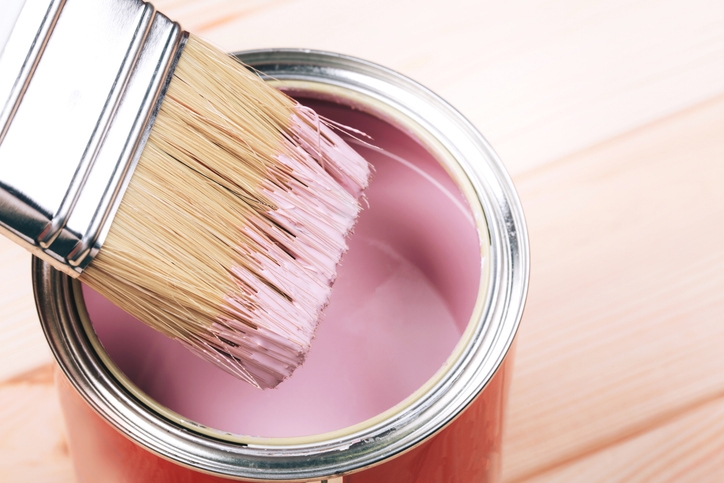Painting over stained wood is a common question for homeowners looking to refresh their space. While stained wood has a classic appeal, painting it can offer a modern update. This article will discuss the pros and cons of painting over stained wood and provide tips on how to do it effectively. Choose from transparent to solid stains for lasting UV and water resistance—book your deck staining estimate.
Understanding Stained Wood
Stained wood is a popular choice for many homes due to its natural beauty and durability. It involves applying a colored stain to the wood, which enhances its grain and texture. Staining provides a protective layer that helps preserve the wood and keep it looking fresh.
The type of wood and stain used affect the final appearance. Common wood types include oak, pine, and cherry, each offering a distinct look. Stains come in various shades, from light to dark, allowing for customization to match any decor. Regular maintenance, such as reapplying the stain and using wood conditioners, helps maintain its appearance over time.
Reasons to Paint Over Stained Wood
Painting over stained wood offers several benefits that can refresh the look of your home. Here are some reasons why you might consider painting over stained wood:
1. Modernize the Look
Stained wood often has a traditional or rustic appearance. Painting over it gives a more contemporary feel, aligning with modern design trends. Light, neutral paint colors brighten up the space, making it feel more open and updated.
If your decor style has changed, painting is an effective way to match your woodwork to your new aesthetic. This update can breathe new life into old furniture, cabinets, or trim without needing to replace them.
2. Cover Damage
Over time, stained wood can show signs of wear and tear. Scratches, dents, and discoloration can detract from its appearance. Painting over the wood covers these imperfections, giving it a fresh, smooth finish.
Painting is also a cost-effective solution for restoring damaged wood. Instead of investing in new pieces, you can rejuvenate your existing ones with a coat of paint.
3. Easy Maintenance
Painted surfaces are often easier to clean and maintain compared to stained wood. Stains and dirt are less noticeable on painted wood, and cleaning typically requires just a simple wipe-down with a damp cloth.
High-quality paint provides a durable finish that withstands everyday wear and tear. This means less frequent touch-ups and a longer-lasting pristine appearance.
4. Customization Options
Painting allows for greater customization in terms of color and finish. You have the freedom to choose any color that complements your decor and personal style, from bold hues to subtle shades.
Additionally, various paint finishes, such as matte, satin, or gloss, offer different looks and levels of durability. This flexibility lets you tailor the appearance and functionality of your wood surfaces to suit your needs.
Reasons to Keep Stained Wood
Keeping stained wood instead of painting it also has its own set of benefits. Below are several reasons why you might choose to keep the natural look of stained wood:
1. Highlight Natural Beauty
Stained wood showcases the natural grain and texture of the wood. This adds a unique and timeless beauty to your home that paint cannot replicate. Each piece of wood has its own character, which staining enhances rather than covers.
The natural look of stained wood complements various styles, from rustic to traditional. It adds warmth and depth to your décor.
2. Durability and Longevity
Stained wood often has a more durable finish than paint. The stain penetrates the wood, providing protection from within, while the topcoat seals it against moisture and wear. This results in a finish that can last for many years with minimal maintenance.
Stained wood also resists scratches and scuffs better than painted surfaces. This makes it a practical choice for high-traffic areas or homes with pets and children, where durability is a key concern.
3. Low Maintenance
Maintaining stained wood is relatively easy. Regular dusting and occasional polishing keep it looking its best. Unlike painted surfaces, stained wood does not require frequent touch-ups or repainting.
Minor scratches and wear on stained wood can be easily addressed with touch-up markers or reapplying a small amount of stain. This straightforward maintenance keeps your wood looking fresh without the need for extensive effort or cost.
4. Timeless Appeal
Stained wood has a classic, timeless appeal that never goes out of style. It can add a touch of elegance and sophistication to any room.
The natural tones of stained wood create a warm and inviting atmosphere. This aesthetic quality can enhance the overall ambiance of your home.
Painting Process
Painting your home involves a detailed process to achieve a great finish. Check out these essential steps to follow for a successful painting project:
1. Surface Preparation
Start by preparing the surface to be painted. This involves cleaning the walls to remove dirt, dust, and grease. Use a mild detergent mixed with water and a sponge to scrub the surfaces, then let them dry completely.
Next, inspect the walls for any cracks, holes, or imperfections. Fill these with a suitable filler and sand the area smooth once it is dry. Proper preparation ensures that the paint adheres well and results in a smooth finish.
2. Priming
Applying primer is an important step before painting. Primer helps the paint stick to the surface better and provides a uniform base for the topcoat. Choose a primer that is compatible with the type of paint you will be using.
Allow the primer to dry completely according to the manufacturer’s instructions. Priming also helps to cover any existing stains or dark colors.
3. Choosing the Right Paint
Select the right type of paint for your project. Consider factors such as the room’s purpose, lighting, and existing decor. For high-traffic areas, opt for durable and washable paints like satin or semi-gloss finishes.
Test a small patch of paint on the wall to see how it looks in different lighting conditions throughout the day. This helps ensure you are satisfied with the color and finish before committing to painting the entire room.
4. Painting Techniques
Use proper painting techniques to achieve a professional finish. Start by cutting in around the edges of the room with a brush. This involves painting the corners, trim, and edges where a roller cannot reach.
Once the edges are done, use a roller to apply paint to the larger surfaces. Work in small sections and use a “W” or “M” pattern to distribute the paint evenly. Apply thin, even coats and allow each coat to dry completely before adding another.
5. Cleaning Up
After painting, clean your brushes and rollers immediately to prolong their life. Use soap and water for latex-based paints and mineral spirits for oil-based paints. Properly cleaning your tools ensures they are ready for future use.
Remove any painter’s tape carefully to avoid peeling off the paint. Make sure to ventilate the area well until the paint is fully dry. Proper cleanup helps maintain the quality of your work and ensures a tidy finish.
Alternatives to Painting Over Stained Wood
If you’re not keen on painting over stained wood, there are several other options to consider. These alternatives preserve the natural beauty of the wood while giving it a refreshed look. Here are some ideas:
- Refinishing: Sand down the existing stain and apply a new stain color. This updates the look while keeping the wood’s natural grain visible. Refinishing can enhance the wood’s appearance and protect it for years to come.
- Sealing: Apply a clear sealant to protect the wood and enhance its natural color. Sealants provide a glossy or matte finish, depending on your preference, and help preserve the wood’s integrity.
- Restaining: Apply a darker or lighter stain over the existing one. Restaining can change the wood’s tone and add depth without covering up its natural beauty. This is a great option for refreshing the wood without painting.
- Using Wood Conditioners: Apply a wood conditioner to even out the wood’s absorption of stain. Conditioners help achieve a more uniform stain application, enhancing the wood’s natural look and preventing blotchiness.
- Adding Decorative Elements: Incorporate decorative moldings or trim to accentuate the wood’s natural beauty. These elements can add character and detail to your wood surfaces, making them stand out.
- Using Natural Oils: Treat the wood with natural oils like tung or linseed oil. These oils penetrate the wood, enhancing its color and grain while providing protection. This method maintains the wood’s natural appearance.
Conclusion
Deciding whether to paint over stained wood depends on your personal style and the look you want to achieve. Painting can modernize and cover imperfections while keeping the stained finish and maintaining the wood’s natural beauty. Consider your goals, the condition of the wood, and the effort required for each option.
If you are looking for professional painting and refinishing services, contact Custom Painting, Inc. Call us at 925-294-8062 or fill out a Contact Form on our website. Serving the Bay area including the cities of San Jose, San Ramon, Santa Clara, Sunnyvale and Sunol.



